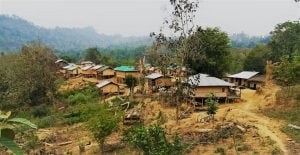The Karnali region of western Nepal has huge hydropower potential and significant development needs. But with a large number of proposed hydropower projects, how can we decide which projects should move forward and which should not?
Researchers from the International Water Management Institute (IWMI) carried out a survey of communities across the Karnali basin to explore the social and cultural importance of rivers for local people, as part of USAID’s Digo Jal Bikas (DJB) project. They carried out 260 social surveys and 5 focus group discussions across six sites in the Karnali Basin. The insights from these interviews can be used to develop tools to help policymakers make better decisions about dam building at a local level.
One such tool is an environmental flow assessment (EFA), which determines the quantity, timing, and quality of water that is necessary to leave in the river to maintain river health.
EFAs in the Karnali basin must also account for importance of water flow for livelihoods and daily activities and socio-cultural aspects, such as household activities, fishing, irrigation, rituals, and tourism. This is particularly important as the growing number of planned dams and hydropower projects in the region raise concerns about the undue strain on rivers.
In Nepal, developers are required to conduct an Environmental Impact Assessment (EIA) before building a hydropower projects, but this does not necessarily include an environmental flow assessment.
This photo story shows some of the findings of the IWMI survey.

In the mountain and hilly areas where many families do not have access to safe piped water or groundwater, the rivers serve as a vital lifeline, providing water for drinking, cooking, irrigation, fishing, milling, livestock rearing, transport, tourism, and recreation. These sacred rivers have been providing communities with water for their everyday needs for generations.

Locals know that no matter how clean the water might look to the naked eye it could in fact be still polluted. 80% of the respondents were concerned about the quality of water from the rivers, but many still have to use the river water for their daily chores. Marginalised families who do not have access to the piped water from the local bazaar also use the water for drinking and cooking.

“When you have no other options, this is the best you have. I have seen men and women washing clothes or occasionally using the bathroom upstream while I have sat by the riverbanks to brush my teeth or drink, what can I do? I turn away and just hope that the water I am using here isn’t contaminated by what I see,” said a man from Bajhang district.
Fishing is important to Karnali’s riparian communities, primarily for household consumption but also, in some cases, as a source of supplementary income. Almost 60% of respondents had an immediate family member who partook in fishing.
Children sometimes fish and sell their catch too. They then buy stationary for school.

Respondents felt that the quantity and size of fish in their rivers have been declining rapidly, and that fish no longer provide a stable supplementary source of income. How water infrastructure could stabilise or further exacerbate water flow challenges for fishing needs to be considered in project assessments.

Communities in the region rely heavily on a combination of rainwater and river water for irrigation. The primary use of their produce is for consumption or subsistence needs. In the mountain and hill regions, communities build canals to divert the water to their paddy fields.

As water levels decrease, families in the mountain region are finding it difficult to transport water required for irrigation through gravity-fed channels. “Well now it’s trickier to build canal systems to irrigate. In some cases, we have to figure out how to lift the water [to our villages] and sometimes we just can’t do anything,” said a man in Dailekh district.

However, in the Terai region, where the rivers are mostly polluted and dry, communities no longer rely on the river water but use groundwater instead.
In recent decades, erratic rainfall and a limited ability to exploit river water resources has substantially reduced the agricultural production within the Karnali Basin. Insufficient water levels mean that some families haven’t sown wheat this year and several water mills in the hilly regions have shut down.

Could water infrastructure reduce seasonal variability and ensure adequate flow for agriculture? Given the heavy reliance on the river for food security and livelihoods, we have to consider irrigation needs.
Originating in the Himalayas, most of the rivers that run through Nepal are considered holy. The holy water from these rivers, better known as jal, is a vital part of various religious ceremonies and festivals, such as Dahasanskar, where Hindus require flowing water to wash away the ashes of a deceased family member once the cremation is complete.

83% of respondents use water from the rivers surrounding their village for religious purposes. They believe the water is holy as the Karnali and its tributaries continue on to merge with the Ganga in the south. The purity of the river is embedded in the religious beliefs but requires the river to flow continuously.
Many holy sites and temples are located next to rivers. Festivals like Chatt Parva and Teej are often celebrated near the river, and the act itself of travelling together to perform these rituals is an important opportunity for women, who rarely occupy public space in these communities, to strengthen communal ties.

The Karnali is home to the Gangetic dolphin, an endangered animal that requires deep-water channels to swim. When water levels rise during monsoon rains, these river dolphins attract local and international tourists alike. However, lowered water levels in the Karnali can limit the dolphin’s mobility, further reducing their already depleted habitat within the Nepali river basin.

White water rafting also attracts backpackers and tourists. The Karnali River is still a popular choice, but decreasing water levels in the basin are making it difficult to sustain the associated tourism, and a dam could have further implications.
Rivers add to the biodiversity of the area, enriching local lives with diversified food sources and building materials, as well as improved air and water quality. Families have been enjoying picnics by the riverbanks during festivals and holidays for generations and wish to continue this in the future.Respondents described how they feel a sense of happiness at the sight of the calm river and at the sound of it flowing. They believe it enriches their environment and improves their general wellbeing.

If the environmental flow assessments do not consider how much water flow is needed for ceremonies, ritual gatherings or for bathing and feeding livestock, for instance, how can we say with reasonable confidence that a project will not have significant impacts on human livelihoods in the process?

The Digo Jal Bikas project (http://djb.iwmi.org/) is made possible by the generous
support of the American people through the United States Agency for International
Development (USAID). The project seeks to promote sustainable water resource
development in Western Nepal through balance economic growth, social justice, and
healthy, resilient ecosystems. The contents of this technical paper are the
responsibility of the authors and do not necessarily reflect the views of USAID or the
United States Government.
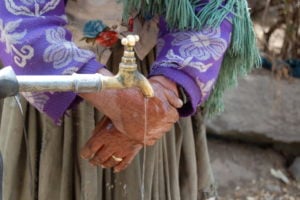

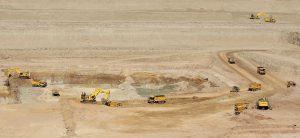
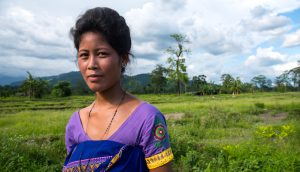
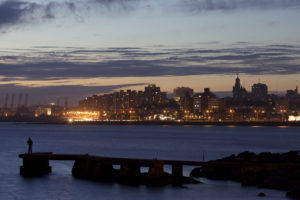
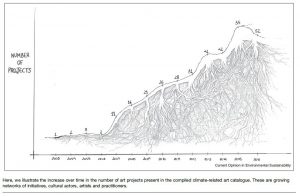
![Peafowls have become a menace in LunchaKameru village in Sumbuk block of South Sikkim, so every morning desperate villagers go to an open patch of land in forest to spread feed for peafowls in the hope that their crops will be spared. They have also constructed water basins out of bamboo [image by: Nidhi Jamwal]](https://dialogue.earth/content/uploads/2018/08/HWC1-300x172.jpg)
